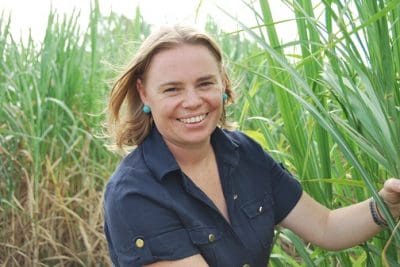THE pressure on primary producers to demonstrate their sustainable credentials is mounting – from government and consumers alike – but does it ‘pay’ for farming businesses to participate in voluntary sustainability accreditation programs?
Addressing this question in a recently-released report, ‘Does Accreditation Pay? Weighing up the value in sustainability accreditation’, agribusiness banking specialist Rabobank says capturing value in sustainability accreditation is not as easy as charging a higher price for the commodity, but that participation in some voluntary sustainability schemes is increasingly expected, as sustainable production practices become more mainstream.
The report says with consumers and government increasingly wanting verification that food and other agricultural commodities are produced without harming the environment, the number, variety and market coverage of voluntary sustainability standards within agriculture is growing, and more producers across a number of commodities are taking part.
While all commodity sectors are under increasing pressure, Rabobank commodity analyst Georgia Twomey said the sugar and cotton sectors, in particular, had a number of sector-specific standards at not only a local level, but also globally.
This was highlighted in a recent survey of 1000 Australian farmers, commissioned by Rabobank, that found sugar and cotton producers to have the highest level of engagement in sustainability accreditation programs.
“Across surveyed commodities, it was found that 42 per cent of Australian farmers are either accredited or considering accreditation in the next five years, but this rose to 68 per cent in the sugar industry and 49 per cent in cotton,” Ms Twomey said.
In the sugar industry, Ms Twomey said, the survey found compliance with industry and government regulation to be the main driver of growers’ uptake of voluntary sustainability standards while cotton was the only surveyed commodity sector to identify price premium as the most prominent motivation to get involved.
“For sugar and cotton, it is sector-based standards that now dominate their sustainable commodity space at both a local and global level,” she said.
“And this has driven an approach of connecting on-farm best management practice programs here in Australia – such as SmartCane in the sugar sector, which is linked to global sustainability certification via Bonsucro and MyBMP in cotton that is aligned with the Better Cotton Initiative (BCI) – with global sourcing standards in both sectors.”
Ms Twomey said while Australian agriculture exceeded minimum standards on a number of fronts addressed in these global standards, sustainability claims were also being increasingly employed by key competitors in export markets.
“Brazil has emerged as the leading supplier of accredited sugar and cotton, meaning Australian producers will face continued pressure to demonstrate progress on sustainability to maintain a competitive position in global markets,” she said.
“That being said, consumers are not always willing to pay for sustainable-certified products and as such, there is currently more certified production than what is being consumed. This gap is likely to remain for some time yet, with 70 per cent of certified cotton still expected to be sold as conventional cotton in 2020.”
Ms Twomey said this was one factor that made it difficult for producers to achieve a substantial price premium for sustainable-certified products.
Another consideration is many of the voluntary sustainability schemes have been developed with the goal of making sustainable mainstream.
“This is important to note, as it indicates the intent to raise the baseline expectations of how commodities are produced and processed en masse versus a point of differentiation within the market and subsequently charging more for it,” she said.
Ms Twomey said one of the key factors to improve demand would be harnessing technological advances, such as blockchain, to make it easier for retailers and consumers to track not only provenance but sustainability practices more closely along the supply chain.
“Along with a more transparent supply chain, new technologies should present producers with improved platforms to benchmark, manage and access their data to keep up with reporting requirements and hopefully reduce the burden of achieving accreditation,” she said.
Ms Twomey said with significant challenges involved in realising premiums for sustainability schemes, it is important for farm businesses to identify the costs of accreditation (as this will vary considerably) and see what level of investment would be required to achieve certification.
“The more knowledge producers are armed with, the more likely they will be able to assess if accreditation stacks up for their business, and even if it doesn’t now, this could change in the future as it is not an issue that will be going away,” she said.
Source: Rabobank
Grain Central: Get our free daily cropping news straight to your inbox – Click here


HAVE YOUR SAY